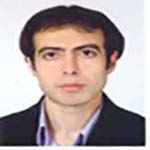A novel method for optimal selection of land cover indices and urban heat islands determination using remote sensing data
Surface temperature is considered to be a substantial factor in urban climatology. Italso affects internal air temperature of buildings, energy exchange, and consequently the comfort of city life. An Urban heat island (UHI) is an urban area with a significantly higher air temperature than its surrounding rural areas due to urbanization. Annual average air temperature of an urban area with a populationof almost one million can be one to three degreeshigher than its surrounding rural areas. This phenomenon can affect societies by increasing costs of air conditioning, air pollution, heat-related illnesses, greenhouse gas emissions and decreasing water quality. Today, more than fifty percent of the world’s population live in cities, and thus, urbanization has become a key factor in global warming. Tehran, the capital of Iran and one of the world’smegacities, is selected as the case study area of the present research. A megacity is usually defined as a residential area with a total population of more than ten million. We encountered significant surface heat island (SHI) effect in this area due to rapid urbanization progress and the fact that twenty percent of population in Iran are currently living in Tehran.SHI has been usually monitored and measured by in situ observations acquired from thermometer networks. Recently, observing and monitoring SHIs using thermal remote sensing technology and satellite datahave become possible. Satellite thermal imageries, especially those witha higher resolution, have the advantage of providing a repeatable dense grid of temperature data over an urban area, and even distinctive temperature data for individual buildings.Previous studies of land surface temperatures (LST) and thermal remote sensing of urban and rural areas have been primarily conducted using AVHRR or MODIS imageries.
Recently, most researchers use high resolution satellite imagery to monitor thermal anomalies in urban areas. The present study takes advantage of themost recentsatellite in the Landsat series (Landsat 8) to monitor SHI, and retrieve brightness temperatures and land use/cover types.Landsat 8 carries two kind of sensors: The Operational Land Imager (OLI) sensor has all former Landsat bands in addition of three new bands: a deep blue band for aerosol/coastal investigations (band 1), a shortwave infrared band for cirrus detection (band 9), and a Quality Assessment (AQ) band. The Thermal Infrared Sensor (TIRS) provides two high spatial resolution thirty-meter thermal bands (band 10 and 11). These sensors use corrected signal-to-noise ratio (SNR) radiometric performance quantized over a 12-bit dynamic range. Improved SNR performance results in a better determination of land cover type. Furthermore, Landsat 8 imageries incorporate two valuable thermal imagery bands with 10.9 µm and 12.0 µm wavelength. These two thermal bands improve estimation of SHI by incorporating split-window algorithms, and increase the probability of detectingSHI and urban climatemodification. Therefore, it is necessary to design and use new procedures to simultaneously (a) handle the two new high resolution thermal bands of Landsat 8 imageries and (b) incorporate satellite in situ measurement into precise estimation of SHI.Lately, quantitative algorithms written for urban thermal environment and their dependent factors have been studied. These include the relationship between UHI and land cover types, along with its corresponding regression model. The relation between various vegetation indices and the surface temperature was also modelled in similar works. The present paper employ a quantitative approach to detect the relationship between SHI and common land cover indices. It also seeks to select properland coverindices from indices like Normalized Difference Vegetation Index (NDVI), Enhanced Vegetation Index (EVI), Soil Adjusted Vegetation Index (SAVI), Normalized Difference Water Index (NDWI), Normalized Difference Bareness Index (NDBaI), Normalized Difference Build-up Index (NDBI), Modified Normalized Difference Water Index (MNDWI), Bare soil Index (BI), Urban Index (UI), Index based Built up Index (IBI) and Enhanced Built up and Bareness Index (EBBI). Tasseled cap transformation (TCT) which is a method used for Landsat 8 imageries, compacts spectral data into a few bands related to thecharacteristics of physical scene with minimal information loss. The three TCT components, Brightness, Greenness and Wetness, are computed and incorporated to predict SHI effect.The main objectives of this research include developing a non-linear and kernel base analysis model for urban thermal environment area using support vector regression (SVR) method, and also comparing the proposed method with linear regression model (LRM) using a linear combination of incorporated land cover indices (features). The primary aim of this paper is to establish a framework for an optimal SHI using proper land cover indices form Landsat 8 imageries. In this regard, three scenarios were developed: a) incorporating LRM with full feature set without any feature selection; b) incorporating SVR with full feature set without any feature selection; and c) incorporating genetically selected suitable features in SVR method (GA-SVR). Findings of the present study can improve the performance of SHI estimation methods in urban areas using Landsat 8 imageries with (a) an optimal land cover indices/feature space and (b) customized genetically selected SVR parameters.
The present study selects Tehran city as its case study area. It employs a quantitative approach to explore the relationship between land surface temperature and the most common land cover indices. It also seeks to select proper (urban and vegetation) indices by incorporating supervised feature selection procedures and Landsat 8 imageries. In this regards, a genetic algorithm is applied to choose the best indices by employing kernel, support vector regression and linear regression methods. The proposed method revealed that there is a high degree of consistency between affected information and SHI dataset (RMSE=0.9324, NRMSE=0.2695 and R2=0.9315).
- حق عضویت دریافتی صرف حمایت از نشریات عضو و نگهداری، تکمیل و توسعه مگیران میشود.
- پرداخت حق اشتراک و دانلود مقالات اجازه بازنشر آن در سایر رسانههای چاپی و دیجیتال را به کاربر نمیدهد.


